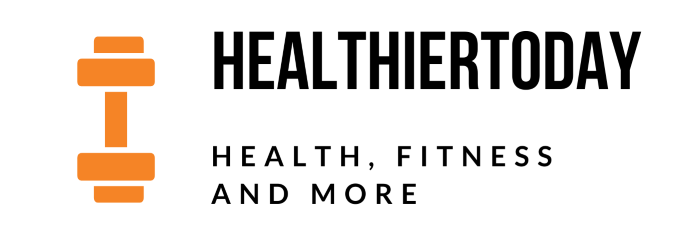Fortunately for most amateur athletes the problem of overtraining remains a theoretical issue. People training 4x a week or more may experience over-reaching or overtraining. And surprisingly enough, symptoms of overtraining can happen even to anoraks. This article describes useful aspects including the role of Aloeride® and probiotics.
Overtraining, also described as chronic fatigue, burnout and staleness has been defined as an imbalance between physical and/or psychological stress, training or competition and recovery. Early stages of overtraining result from ‘too much throttle and no breaking’ and are called the orthosympathetic form whilst in more advanced stages, your orthosympathetic tone gets exhausted enabling its opposite number, the parasympathetic system to become dominant.
The orthosympathetic overtrainee is in permanent ‘fight or flight’ mode. Both fight and flight should be incidental challenges during which your adrenal glands pump out hormones like adrenaline (epinephrine), noradrenalin (norepinephrine) and cortisol, whilst indirectly raising human growth hormone (HGH) and thyroid stimulating hormone (TSH). These glands however are sprinter organs, they were not designed to cope with a marathon.
The parasympathetic overtrainee mimics some of Addison’s disease symptoms hence it is referred to as Addisonoid overtraining. The marathon of fight and flight has exhausted the adrenal sprinter glands and they now fail to regulate hormonal concentrations properly, this now is a serious problem. On routine blood work the overtainee is likely to show progressive anaemias with low haemoglobin and low haematocrit.
Athletes primarily complain of underperformance of course, other common symptoms are progressively susceptibility to common infections and injury, persistent high levels of fatigue, heavy muscles and depression. As said, an athletes’ reaction to underperformance is often to increase training rather than to rest which exacerbates their recovery deficit (I am tired, but I feel better after exercise, so I exercise is the strategic equivalent of flogging a dead horse). Often symptoms are ignored until performance is chronically affected.
Sleep disturbances like having difficulty in getting to sleep, waking up in the night and waking un-refreshed are experienced by some 90% of athletes suffering from overtraining. Other symptoms include loss of appetite, loss of weight, loss of competitive drive, increased emotional instability such as depression, anxiety, irritability and mental exhaustion, poor attitude to training and musculoskeletal soreness.
A simple DIY monitoring system is by checking the morning heart rate. Take your pulse immediately upon waking whilst still in bed. If your waking pulse any day is elevated by more than 8 beats/minute above its average level for the preceding week you are falling into overtraining.
Alternatively check your morning body weight, the weekly average weight should not vary by more than 2lbs. If it drops by more than 3lbs on any day from a previous stable body weight you are falling into overtraining.
As far as laboratory tests go, a useful immunological marker for excessive exercise is salivary IgA whilst a useful stress marker is Cortisol/DHEA. The stress hormones Cortisol and DHEA are not released constantly throughout the day, but are secreted in a cycle called the circadian rhythm (highest values being in the morning and the lowest at night). When the adrenal glands become exhausted (parasympathetic phase) Cortisol and DHEA in the blood stream become imbalanced. Adrenal Stress Index uses four saliva samples to measure the adrenal rhythm and gives you a DHEA to Cortisol correlation. Of course hypothalamic-pituitary impairment of the corticotrophic axis causing adrenal insufficiency should be taken into account and specific testing of hypothalamus and pituitary gland may be considered.
Three common pathways for overtraining are:
o intensity / load excess
o recovery deficit
o nutritional deficiency
To remedy the first two you need to lower stress load and increase recovery time. In severe overtraining athletes should stop training entirely for 7-14 days, increase sleep to 9 hours of solid sleep a night and increase broad spectrum antioxidant intake to 200% of usual intake.
To support the adrenal glands you can supplement with good quality organic glandular extracts from government inspected, New Zealand or Australia free range animals that have not been fed hormones or antibiotics. Or you can use a complex homeopathic remedy like Glandula Suprarenalis Suis-Injeel (Forte). Appropriate supplementation with good quality DHEA should only be considered if an abnormal adrenal stress test dictates this.
To remedy the last point you need to combine a right-for-you wholefood diet and should consider Aloeride® and probiotics. Combined ignorance and arrogance has many athletes train 3 – 4x /wk without fuelling their bodies appropriately. The famous 5Ps: poor preparation produces poor performance open the gates towards overtraining, injury, degenerative changes and illness.
Improving the immune system of athletes helps reduce the number and length of infections suffered by them. The large, highly immune modulating aloeride fraction within Aloeride® together with good probiotics do exactly that. Also they improve the uptake of necessary nutrients. A double-blind, placebo-controlled, cross-over trial – published in Br J Sports Med. 2008 Feb 13 – was conducted in Australia over a four-month period of winter training of twenty healthy, elite male distance runners. The conclusion was that prophylactic administration of probiotics was associated with a substantial reduction in the number of days and severity of respiratory illness in a cohort of highly trained distance runners likely due to a two-fold (p=0.07) greater change in whole-blood culture interferon gamma (IFN-fx) compared with placebo.
Athletes, anoraks or anybody else suffering from an imbalance between physical and/or psychological stress, training or competition and recovery should change that balance, and ingest Aloeride®, probiotics and highly absorbable wholefood nutrition to recover.
